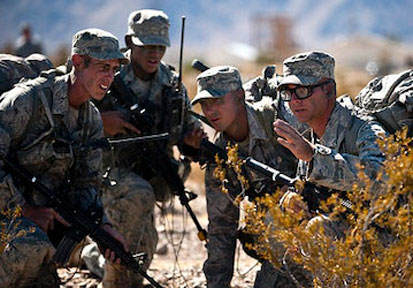Effective teamwork is one of the most critical pieces of mission success. And it can take a lot of effort to get people to build the kinds of relationships that make a high-performing team. “Team cohesion”—a term you might hear often in the military—is really a measure of those relationships. But relationships can be complicated, and team relationships are no different. The reality is that a lot of different factors fall under the umbrella of team cohesion. Whether you’re in a leadership position or simply working on your own social fitness, understanding the components of cohesion can help you improve your relationships and optimize your team’s ability to work together.
Why do teamwork and team cohesion matter?
Teams are what get things done in the military. Though anyone can certainly be high-performing and accomplish incredible feats, any individual Service Member has a team backing them up. Teams allow for a diversity of knowledge and skills that leads to better problem-solving and higher performance. Team members can also support each other, share the load, and hype each other up in such a way that morale can build.
But the catch is that until a group becomes cohesive, none of those things can be true. And the second catch: It can be difficult to build cohesion. Mistrust, dislike, and disengagement, can all be barriers to team cohesion. Another barrier is simply not knowing what team cohesion really means! It’s important to understand what team cohesion is for two reasons: improvement and metrics.
- Improvement. To put it simply, you can’t work on something if you don’t really know what that something is. Especially when it comes to leadership best practices, you have to know what to look for and which specific aspects of team relationships are falling short in order to get the full picture.
- Measurement. Metrics are important in the military. In order to know whether actions being taken to improve team cohesion are effective, there has to be a solid understanding of which components of a team and relationships are being measured.
Components of team cohesion
While some schools of thought approach the idea of team cohesion as a single measure—whether team members want to leave or stay—it’s really more complex than that. In fact, while the end result might be whether someone wants to go or not, a lot of different variables are at play that ultimately go into that result.
At a high level, cohesion is often broken down into two different categories: social cohesion and task cohesion. Social cohesion is really about those personal relationships and the nature of the interpersonal bonds between people in a group. Task cohesion, on the other hand, is about the level of shared commitment to a mission or to achieve a goal. The research is mixed on how these two aspects of cohesion affect team performance. Some evidence shows that task cohesion is modestly, but most consistently, linked to higher performance. Meanwhile, other research suggests that more aspects of overall cohesion (and where the most influence can be affected) are tied to social components. It’s also important to keep in mind that cohesion might look differently when you’re talking about vertical cohesion (or relationships with those up and down the chain of command) or horizontal cohesion (between members of the same ranks or working together on a single team).
But at the end of the day, when you’re in a military environment, it all matters. So whether you’re a leader or simply looking to boost your contributions to the team, consider using your interpersonal skills and social fitness talents to build team cohesion in these areas:
- Closeness is about the strength of the one-on-one bonds between team members. This component could also be considered as friendship or even emotional connection. Build closeness and friendships by showing vulnerability and opening up with honesty and authenticity to others.
- Cooperation is closer to task cohesion, and is ultimately about how well team members can coordinate their efforts in order to complete an assignment or reach a goal. To increase cooperation, focus on increasing motivation and improving your goal-setting skills.
- Belongingness is about how much individual team members feel they are part of the whole, and in part how closely they identify with their teammates. To build belongingness, start by checking your own biases and shifting your mindset so you can connect with those around you.
- Pride is an aspect of team cohesion that describes how much team members feel connected to the achievements, purpose, or even ideology of the team—or for example, how much they connect to the ideals of the military or a specific branch of service. To build team pride, focus on finding purpose in your work and the work of your team.
- Respect is about teammates honoring the perspectives and skills of their other teammates. Build respect first, through thoughtful and professional communication.
- Loyalty is not only about allegiance to the larger organization, but loyalty to the smaller team and willingness to stay, even when you’re frustrated or struggling with team members. In the military, you might not always have the option to leave the group, so loyalty is really about your mindset. So, take stock and make adjustments when needed.
- Trust is arguably one of the most important components of healthy relationships in general, but is especially important when your life and well-being are on the line. Build team trust by having fun and taking your time to let relationships grow.
Strong teams don’t just happen, and being able to effectively work as a team takes strong relationships. A lot goes into building a cohesive team, and by focusing on any one (if not all) of these different aspects of team cohesion, you can help your team perform better and feel more connected to others too.
